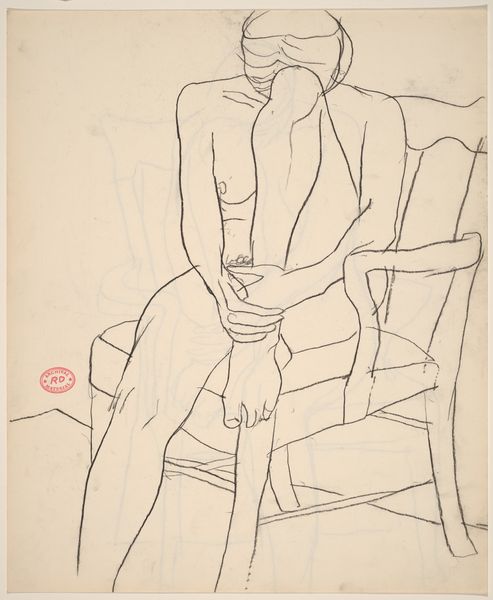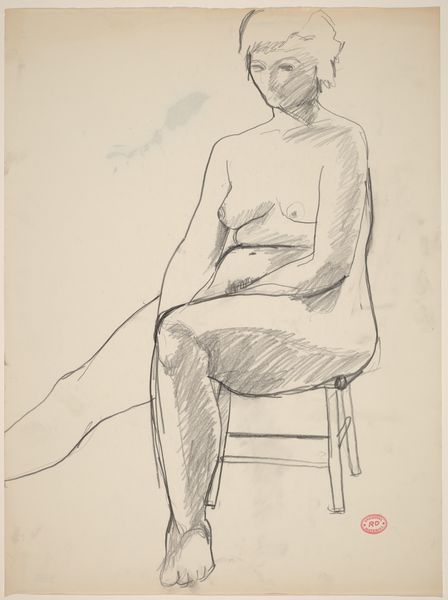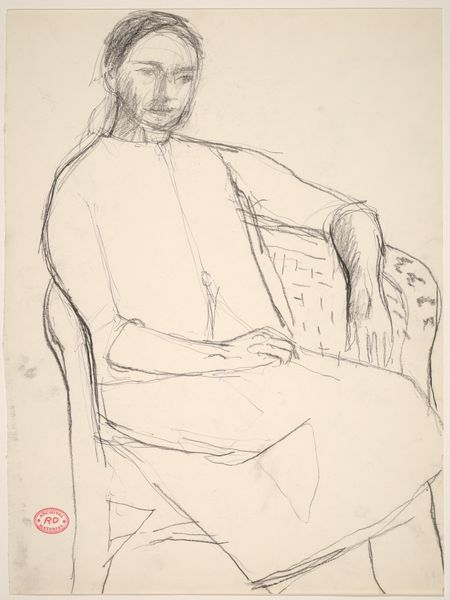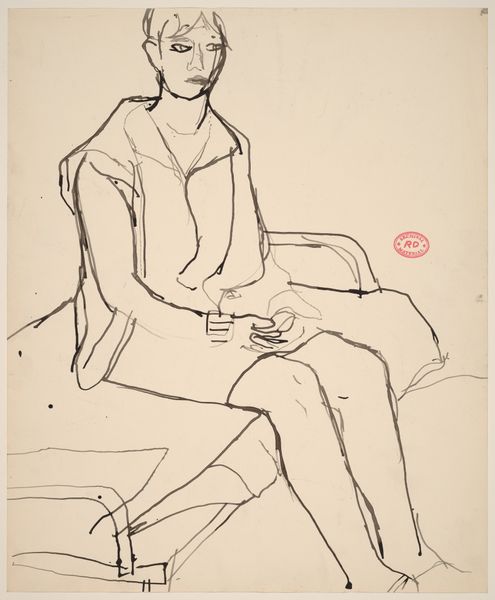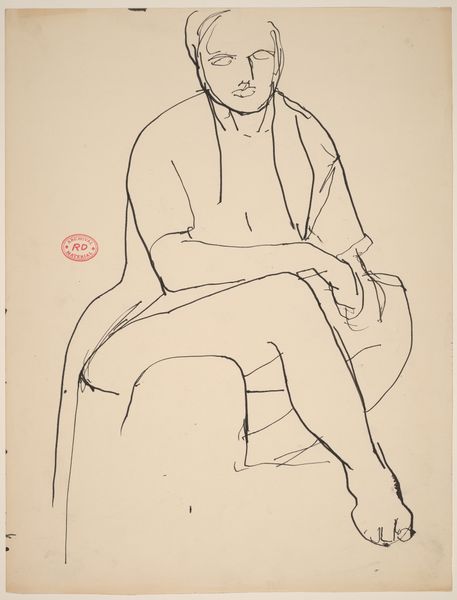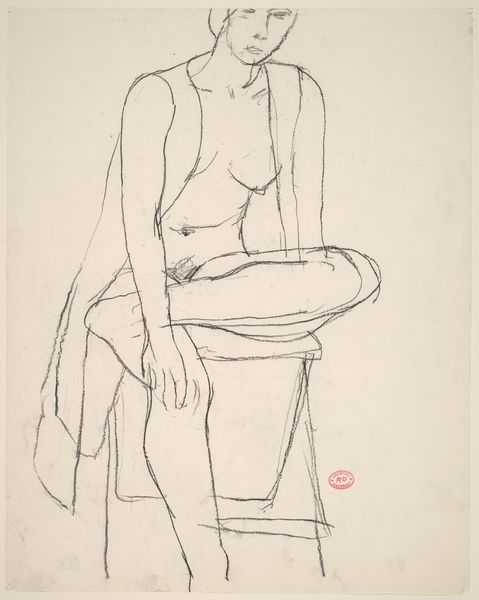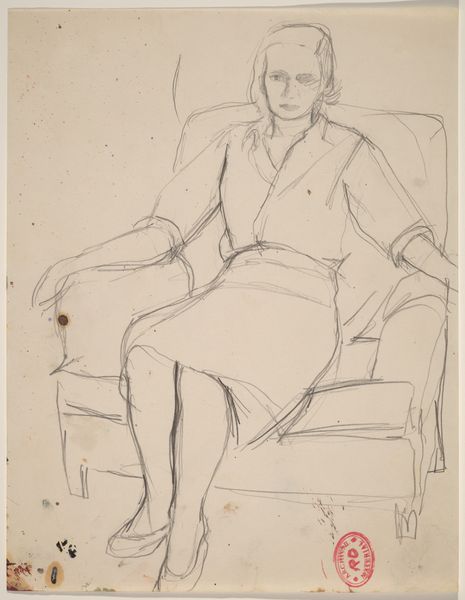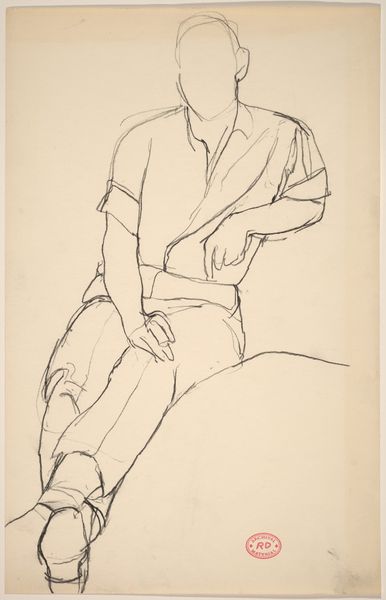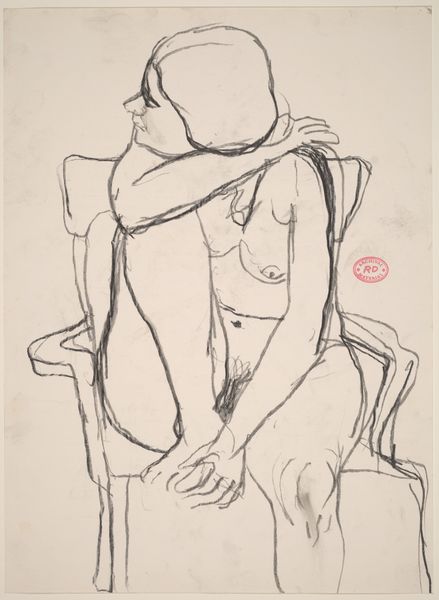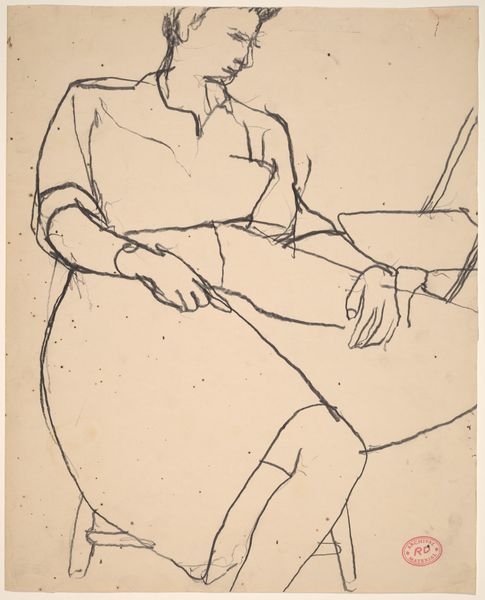![Untitled [woman seated in armchair clasping her hands] by Richard Diebenkorn](/_next/image?url=https%3A%2F%2Fd2w8kbdekdi1gv.cloudfront.net%2FeyJidWNrZXQiOiAiYXJ0ZXJhLWltYWdlcy1idWNrZXQiLCAia2V5IjogImFydHdvcmtzLzlmNWNiMTdhLWZjYmMtNDQyYi05ZDIzLTQ1Y2FkMmY1ODQ1My85ZjVjYjE3YS1mY2JjLTQ0MmItOWQyMy00NWNhZDJmNTg0NTNfZnVsbC5qcGciLCAiZWRpdHMiOiB7InJlc2l6ZSI6IHsid2lkdGgiOiAxOTIwLCAiaGVpZ2h0IjogMTkyMCwgImZpdCI6ICJpbnNpZGUifX19&w=3840&q=75)
Untitled [woman seated in armchair clasping her hands] 1955 - 1967
0:00
0:00
drawing, charcoal
#
portrait
#
drawing
#
ink drawing
#
pen sketch
#
figuration
#
bay-area-figurative-movement
#
charcoal
Dimensions: overall: 43.4 x 35.2 cm (17 1/16 x 13 7/8 in.)
Copyright: National Gallery of Art: CC0 1.0
Curator: Before us, we have Richard Diebenkorn's "Untitled [woman seated in armchair clasping her hands]", created sometime between 1955 and 1967, a striking example of his figuration using charcoal and ink. Editor: Stark, almost unsettling in its simplicity. The stark black lines against the bare paper really draw attention to the subject’s posture—with her hands clasped, she appears lost in thought or perhaps restrained. Curator: Precisely. Consider the date of its creation, mid-century America. This work reflects an era of both social constraint and emerging anxieties around gender roles. What was a woman’s place during this era, Diebenkorn might ask? Editor: Yes, but let’s also note how formally brilliant it is. The economy of line, the way he suggests volume and form with such minimal means—it’s almost architectural. Notice the interplay between positive and negative space? Curator: Indeed. Diebenkorn often repurposed discarded materials—working on whatever was at hand. Here the choice of charcoal, readily available, underscores its status as a sketch, not necessarily a finished product. The means of production and access also contribute to how art is produced, consumed and understood, right? Editor: Fair enough, but the composition still steers the gaze. The linear quality against its ground and the texture resulting from the charcoal is remarkable! It provides a contemplative aesthetic impact far more complex than merely material resourcefulness. Curator: But wouldn't you agree that the seemingly "unfinished" quality lends authenticity and immediacy? It becomes an unvarnished observation of lived experiences and hints at the realities that weren't typically captured in formal paintings during the era? Editor: I see your point, but I think its strength lies in that delicate equilibrium of lines that, in its austerity, elicits the depth of emotional involvement with the model, almost in the tradition of Giacometti. It moves you. Curator: Definitely—and in this simple work Diebenkorn is offering a comment about a whole social construct. Thank you for the visual and historical insights, that really resonated. Editor: Agreed; seeing how this single work pulls together the formal, the material, and the cultural threads of its creation, its complexity becomes that much more compelling.
Comments
No comments
Be the first to comment and join the conversation on the ultimate creative platform.
